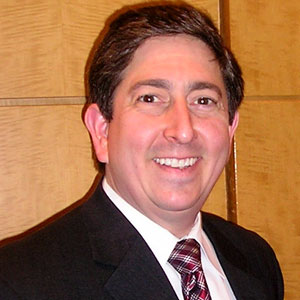
Every quadrennial presidential cycle, as the newly elected leader moves into the Oval Office, he selects a core group of advisors who are philosophically aligned and eager to make changes in the federal government’s process. However, this is often not as simple as the new administration believes.
Institutional impediments, bureaucratic barriers, and political procedures can hinder immediate culture shifts in the regulatory environment. However, the first 100 days are the best time to introduce new ideas, nominate appointed leaders, and roll out governmental changes. These first months are laden with kinetic energy and some anxiety within the federal regulatory agencies, but advancing the change promised in a presidential campaign can become a real priority.
Such was the case when Scott Gottlieb, MD, was confirmed on May 9, 2017, as the 23rd commissioner to the U.S. Food and Drug Administration (FDA). As a former deputy commissioner for Medical and Scientific Affairs at the FDA, Gottlieb returned to the agency with great experience and an insight few other commissioners have had.
How the FDA Is Protecting Public Health
Often seen on the nightly news, the FDA is one of the most recognized federal agencies with oversight authority that most Americans can name. It’s with this power and reputation that the FDA has increased its efforts in protecting public health, particularly in the tobacco cessation area. Within the agency, the Center for Tobacco Products (CTP) was created from the Family Smoking Prevention and Tobacco Control Act of 2009, intended to give control over the manufacturing, distribution, and marketing of tobacco products. This control has helped bring down the number of Americans who smoke and develop cancers related to tobacco.
Recently, in a speech to a health group, Commissioner Gottlieb provided some background on the development of disease discovery. He pointed to historic breakthroughs and how the world has come to expect significant understanding in how to approach cures more efficiently and economically.
“It took four decades for our modern understanding of immunology to be firmly established and then to be converted into tools that allow us to fully manipulate the human immune system as a way to cure cancer,” Gottlieb said.
He continued by proposing a bold philosophy directed inward at the FDA. “But at the same moment that we’re shrinking the sequence of time between a basic science discovery and the creation of practical solutions for patients that are harnessed from these breakthroughs, the process for developing those opportunities is also getting more costly and uncertain. In many cases, it’s also getting more prolonged. This is especially true when it comes to new drug development. We’re on an unsustainable path, where the cost of drug development is growing enormously, as well as the costs of the new medicines. We need to do something now, to make the entire process less costly and more efficient. Otherwise, we won’t continue to realize the practical benefits of advances in science, in the form of new and better medicines.”
What policy leaders hear from this statement is a commitment to make changes to the regulatory process. Keeping the balance between patient safety and medical advances is the priority, but tweaking the system itself is what the commissioner is advancing.
The Case of Right-to-Try Medications
Take, for example, the issue of access to experimental drug treatment for patients with cancer who have found no success from other medications and have been denied access to a clinical trial. The FDA has classified right-to-try medications, which are approved and not-yet-approved medicines, for which both the physician and the patient are willing to try in an attempt to extend or save the patient’s life. Although passed at the state legislative level by 37 governors, no single, unifying piece of legislation has become law.
In summer 2017, the U.S. Senate did pass a bill, S. 204, called the Right to Try Act of 2017, requiring the federal government to allow “unrestricted manufacturing, distribution, prescribing, and dispensing of experimental drugs, biologic products, and medical devices that are intended to treat a patient who has been diagnosed with a terminal illness and authorized by state law.” It passed with bipartisan support and is being considered in the U.S. House of Representatives with similar goals.
However, the FDA already approves 99% of the cases brought into the expanded access (EA) application pool. The agency argues that specific guidelines are in place for public safety surrounding EA and its compassionate use policy. In fact, the FDA will consider usage at many points throughout the drug approval process, including, although rare, in pre-clinical trial periods. And the FDA also is known to work with patients who are terminally ill and with those who only have approval from a single physician, rather than the usual multiple oncologists for the EA process.
Gottlieb highlighted his previous cancer battle and reliance on a variety of treatments, including a commercially available therapy in an off-label manner, and spoke to the agency’s expanded access program. “While the agency permits almost all expanded access applications to proceed, it makes meaningful changes in approximately 10 percent of these cases to enhance patient safety,” Gottlieb said. “The changes are based on the scientific and medical expertise of our staff, and informed by confidential information provided to FDA by product sponsors during the course of development. This information is often unavailable to the treating physician—and the larger medical community—and becomes available only after a drug is approved. It is important to note that access to investigational products requires the active cooperation of the treating physician, industry, and FDA in order to be successful.”
Safety in Clinical Trials
The clinical trials schedule for drug development and patient usage may seem arduous, but public safety is a standard the FDA takes very seriously. Questions asked along the way include:
- Who qualifies to participate (selection criteria)?
- How many people will be part of the study?
- How long will the study last?
- Will the study have a control group or other ways to limit research bias?
- How will the drug be given to patients and at what dosage?
- What assessments will be conducted, when, and what data will be collected?
- How will the data be reviewed and analyzed?
Patient-centered care continues to be a priority for the Society, and access to treatment tops that list. “It is important for oncology nurses to understand some of the features of the specific right-to-try laws enacted in their state, including how the legislation addresses patient eligibility, drug requirements, informed consent requirements, physician protections, and drug manufacturer protections.”
Both sides are trying to provide opportunities for patients, and maintain public safety. It’s a complicated subject, with no immediate answers. As the FDA moves forward to strengthen its role as both an advocate and a scientific leader, it balances innovation with public safety. The mark of a good agency is being able to walk that line, and the FDA continues to be a leading voice for both. ONS will continue to provide the oncology nurse’s expertise and experience with patients with cancer to federal regulators as they make decisions on healthcare implementation.






